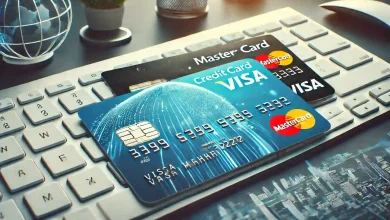Apple Sign Applemiller9to5mac: Unlocking the Future of Authentication

Introduction
In an era where technology and innovation shape our daily lives, the latest advancements from Apple continue to capture attention. One such development making waves is the “Apple Sign” feature, especially as reported by Applemiller from 9to5Mac. This article delves deep into what apple sign applemiller9to5mac is, its potential applications, and how it reflects Apple’s ongoing commitment to user experience and security.
What is Apple Sign?
Apple Sign is an innovative feature designed to streamline user authentication across various applications and services. Leveraging the power of Apple’s ecosystem, it aims to provide a seamless and secure way for users to log into their accounts without the hassle of remembering multiple passwords.
In essence, Apple Sign utilizes biometrics, such as Face ID and Touch ID, to authenticate users. This not only enhances security but also significantly reduces the friction often associated with logging into apps and websites. As reported by Applemiller on 9to5Mac, Apple Sign is poised to become an integral part of Apple’s suite of tools, emphasizing both security and user convenience.
The Rise of Passwordless Authentication
The tech industry has witnessed a shift towards passwordless authentication methods in recent years. As cyber threats become more sophisticated, traditional passwords are increasingly viewed as vulnerable. Apple Sign aligns perfectly with this trend, offering a solution that not only meets security demands but also caters to user convenience.
Benefits of Apple Sign
- Enhanced Security: With Apple Sign, sensitive information is kept safe through advanced encryption and biometric authentication. This means that even if a malicious actor gains access to an account, they won’t be able to bypass the biometric locks in place.
- User Convenience: Gone are the days of forgotten passwords and complicated login processes. Apple Sign allows users to log in with a simple touch or glance, making the process quick and hassle-free.
- Universal Integration: One of the most compelling features of Apple Sign is its potential for universal application across various platforms. Whether you’re accessing your bank account, social media, or cloud storage, Apple Sign aims to provide a uniform login experience.
- Cross-Device Compatibility: Apple devices are known for their seamless integration. Apple Sign is designed to work across all Apple devices, ensuring that users have consistent access whether they’re using an iPhone, iPad, or Mac.
How Apple Sign Works
At its core, Apple Sign operates on a straightforward premise: simplicity meets security. Here’s how it works:
Biometric Authentication
Apple Sign utilizes the biometric capabilities of devices—primarily Face ID and Touch ID. When users set up Apple Sign, they enroll their biometric data. This data is stored securely on the device, ensuring that it cannot be accessed by external entities.
Token-Based System
Instead of sending passwords over the internet, Apple Sign uses a token-based authentication system. When a user attempts to log in, the system generates a unique token that corresponds to the user’s biometric data. This token is then verified without exposing sensitive information, thereby enhancing security.
Seamless Integration with Apps
Developers can easily integrate Apple Sign into their applications, allowing users to benefit from this feature without extensive modifications. By incorporating Apple Sign, apps can offer a more user-friendly experience while enhancing security protocols.
The Future of Authentication
As the digital landscape evolves, the need for robust and user-friendly authentication methods becomes increasingly vital. Apple Sign represents a significant step forward in this domain, not just for Apple but for the tech industry as a whole.
Implications for Developers
For developers, Apple Sign opens new avenues for creating applications that prioritize security without sacrificing user experience. By adopting Apple Sign, developers can streamline their login processes and reduce the burden of managing password resets and security breaches.
Potential Challenges
While the benefits of apple sign applemiller9to5mac are numerous, there are potential challenges to consider. One concern is the reliance on biometric data. Although biometrics are generally more secure than passwords, they are not infallible. Cases of false positives or negatives, as well as potential biometric data theft, remain pressing issues.
Additionally, there may be hesitance among users who are not comfortable sharing their biometric data. Educating users on the security measures in place and the benefits of using Apple Sign will be crucial for its widespread adoption.
Apple’s Commitment to Privacy and Security
![]()
Apple has consistently positioned itself as a champion of user privacy and security. The introduction of Apple Sign is a testament to this commitment. The company emphasizes that biometric data is never shared with third-party applications and remains stored securely on the device.
This commitment to privacy is essential in an age where data breaches are rampant. Users want assurance that their personal information is protected, and Apple Sign aligns with this demand by prioritizing security and user control.
Conclusion
As we move towards a more digitized future, the need for secure, efficient, and user-friendly authentication methods becomes paramount. Apple Sign, as highlighted by Applemiller in 9to5Mac, represents a significant advancement in this arena. By combining the power of biometric authentication with a seamless user experience, Apple is not only enhancing security but also redefining how we interact with technology.
With its focus on security, convenience, and privacy, apple sign applemiller9to5mac is poised to set a new standard in user authentication. As adoption grows and developers integrate this feature into their applications, we can expect to see a significant transformation in how we log into our digital lives. The future is here, and with Apple Sign, it looks both secure and promising.




